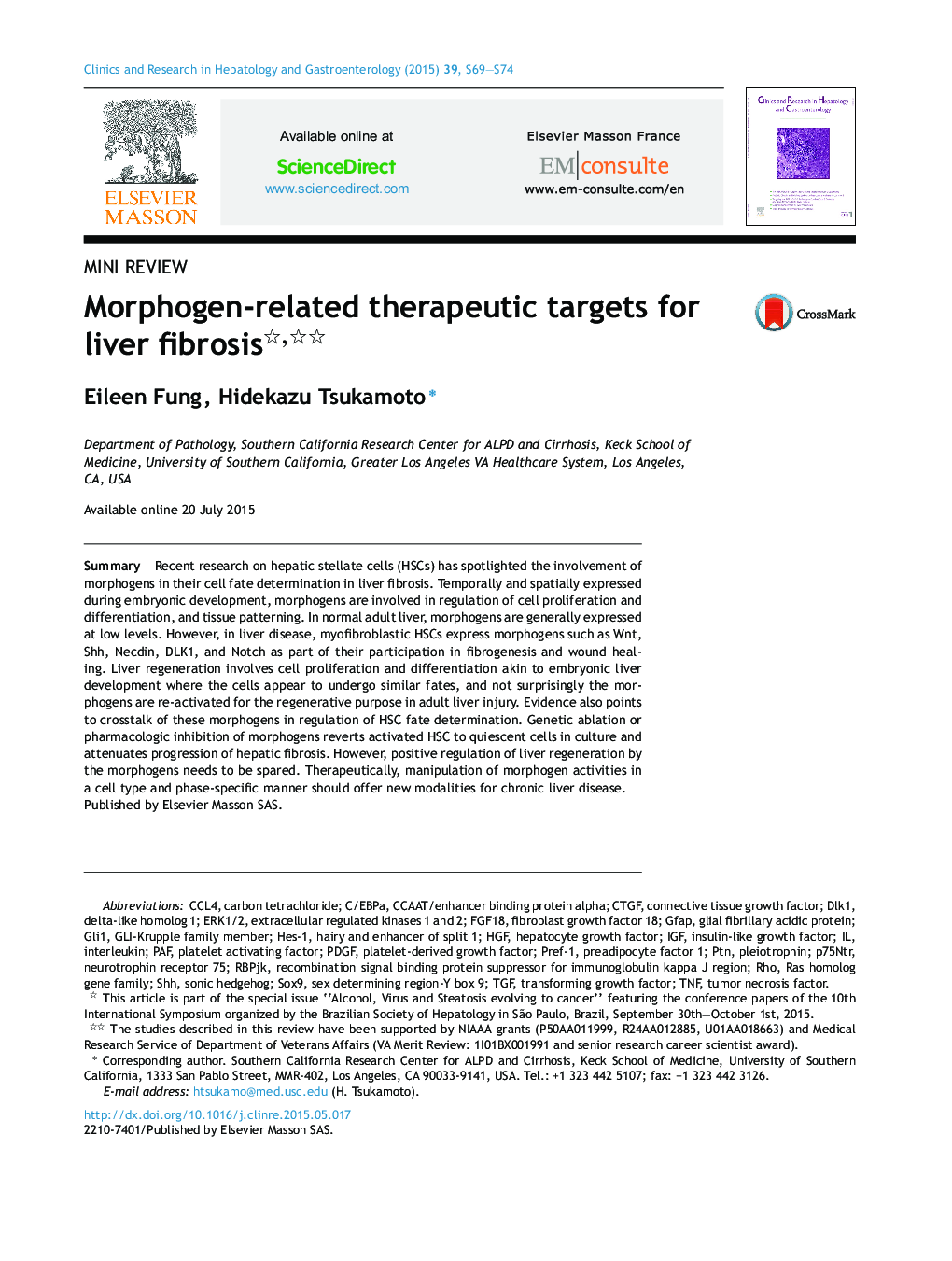| Article ID | Journal | Published Year | Pages | File Type |
|---|---|---|---|---|
| 3286388 | Clinics and Research in Hepatology and Gastroenterology | 2015 | 6 Pages |
SummaryRecent research on hepatic stellate cells (HSCs) has spotlighted the involvement of morphogens in their cell fate determination in liver fibrosis. Temporally and spatially expressed during embryonic development, morphogens are involved in regulation of cell proliferation and differentiation, and tissue patterning. In normal adult liver, morphogens are generally expressed at low levels. However, in liver disease, myofibroblastic HSCs express morphogens such as Wnt, Shh, Necdin, DLK1, and Notch as part of their participation in fibrogenesis and wound healing. Liver regeneration involves cell proliferation and differentiation akin to embryonic liver development where the cells appear to undergo similar fates, and not surprisingly the morphogens are re-activated for the regenerative purpose in adult liver injury. Evidence also points to crosstalk of these morphogens in regulation of HSC fate determination. Genetic ablation or pharmacologic inhibition of morphogens reverts activated HSC to quiescent cells in culture and attenuates progression of hepatic fibrosis. However, positive regulation of liver regeneration by the morphogens needs to be spared. Therapeutically, manipulation of morphogen activities in a cell type and phase-specific manner should offer new modalities for chronic liver disease.
